It's all about the classical music composers and their works from the last 400 years and much more about music. Hier erfahren Sie alles über die klassischen Komponisten und ihre Meisterwerke der letzten vierhundert Jahre und vieles mehr über Klassische Musik.
Total Pageviews
Friday, November 8, 2024
Heal The World - André Rieu (Tribute to Michael Jackson)
Original Lyrics: There's a place in your heart And I know that it is love And this place could be much Brighter than tomorrow And if you really try You'll find there's no need to cry In this place you'll feel There's no hurt or sorrow There are ways to get there If you care enough for the living Make a little space Make a better place Heal the world Make it a better place For you and for me And the entire human race There are people dying If you care enough for the living Make it a better place For you and for me If you want to know why There's love that cannot lie Love is strong It only cares of joyful giving If we try we shall see In this bliss we cannot feel Fear of dread We stop existing and start living The it feels that always Love's enough for us growing So make a better world Make a better place Heal the world Make it a better place For you and for me And the entire human race There are people dying If you care enough for the living Make a better place for you and for me And the dream we were conceived in Will reveal a joyful face And the world we once believed in Will shine again in grace Then why do we keep strangling life Wound this earth, crucify its soul Though it's plain to see This world is heavenly Be god's glow We could fly so high Let our spirits never die In my heart I feel you are all my brothers Create a world with no fear Together we cry happy tears See the nations turn their swords into plowshares We could really get there If you cared enough for the living Make a little space To make a better place Heal the world Make it a better place For you and for me And the entire human race There are people dying If you care enough for the living Make a better place for you and for me There are people dying If you care enough for the living Make a better place for you and for me You and for me
Pianists and Their Composers: Chopin
by Frances Wilson, Interlude
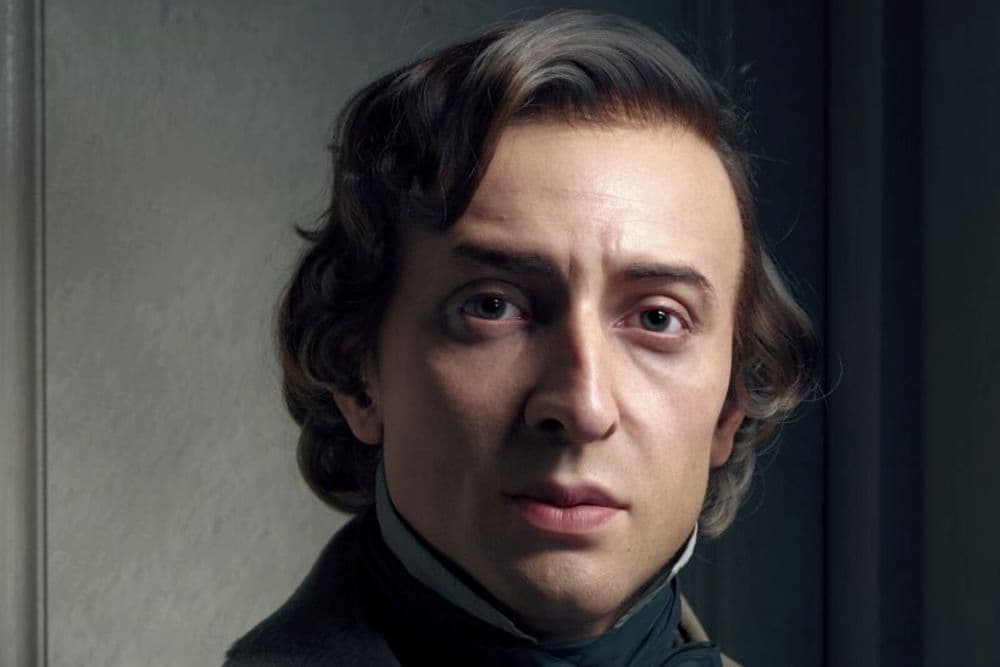
Frédéric Chopin
When asked, the great Chopin player Arthur Rubinstein could not explain why Chopin’s music spoke to him, but like the music of J.S. Bach (which Chopin greatly admired and studied), it expresses universal humanity which, combined with a certain vulnerability, speaks to so many of us, and on many different levels.
Arthur Rubinstein
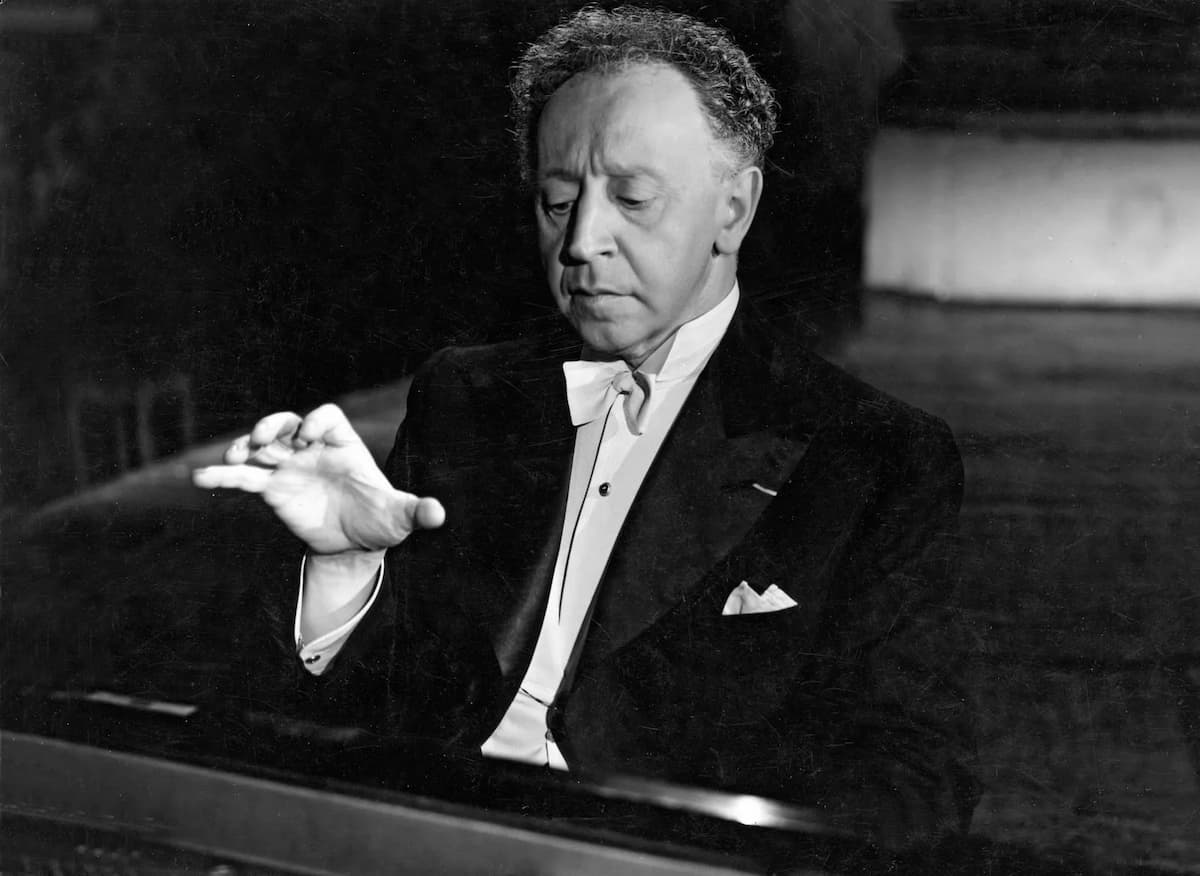
Arthur Rubinstein
“When the first notes of Chopin sound through the concert hall there is a happy sign of recognition. All over the world men and women know his music. They love it. They are moved by it. When I play Chopin I know I speak directly to the hearts of people.”
An unrivalled authority and one of the greatest interpreters of the music of Chopin, Rubinstein brought great dignity and refinement to the music, avoided unnecessary mannerisms and sentimentality, and revealed the structural logic of Chopin’s writing. His playing is memorable for its elegant vocal phrasing, beauty of tone, and natural yet sophisticated shaping.
Arthur Rubinstein Plays Chopin’s Polonaise in A Flat Major, Op.53
Dinu Lipatti

Dinu Lipatti playing at his last recital © Michel Meusy
“A master of the keyboard” (Harold C Schonberg), Dinu Lipatti was the pupil of an older Chopin master, Alfred Cortot.
Lipatti’s immaculate performances of the waltzes, in particular, are spontaneous, light and nimble, lyrical and suitably dancing, with subtle rubato and great charm.
Maria João Pires
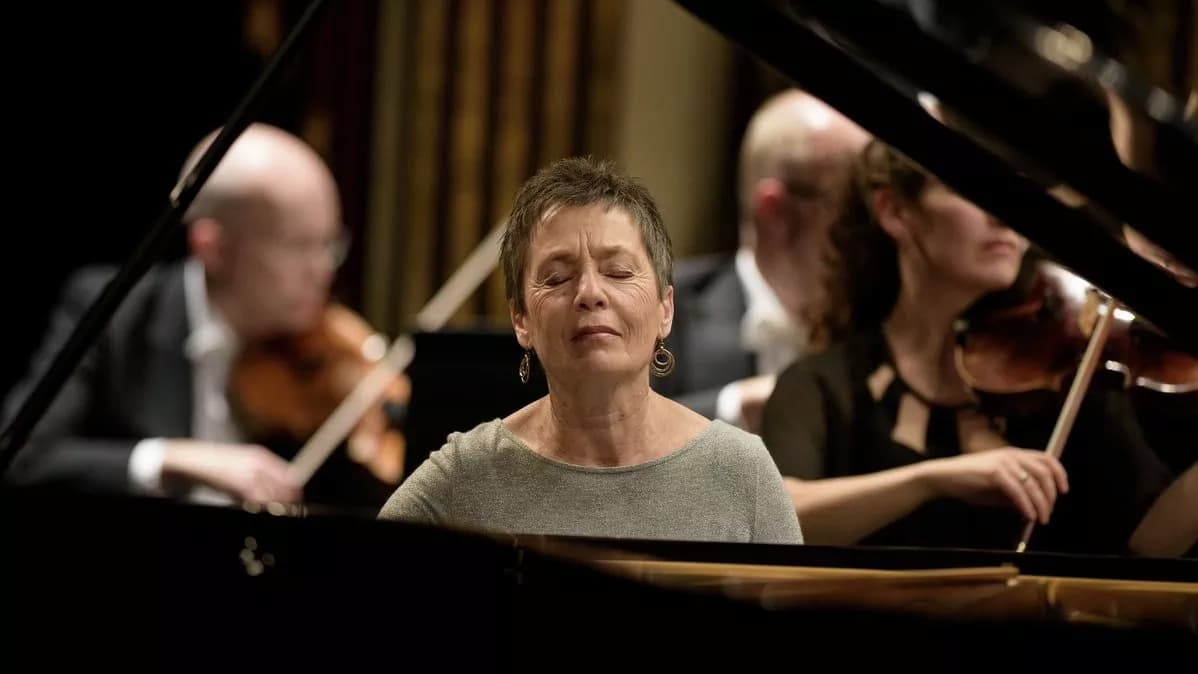
Maria João Pires © classicosdosclassicos.mus.br
“It’s very inner music and very deep,” Maria João Pires has said of Chopin. For her, he is “the deep poet of music”. That depth is really evident in Pires’ playing of the Nocturnes – intimate, refined and passionate, her interpretations eschew drawing room night-time sentimentality and capture all the drama and emotional intensity of these much-loved pieces.
Maurizio Pollini
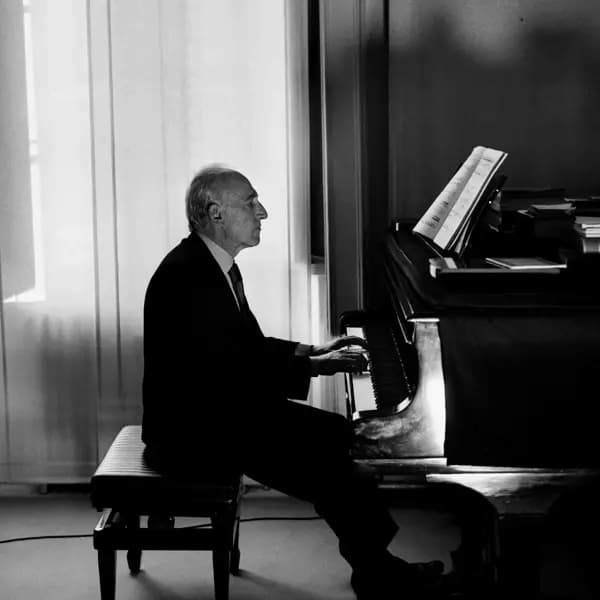
Maurizio Pollini
Described by one critic as “the greatest Chopin player to have emerged from Italy since the Second World War”, Maurizio Pollini’s association with Chopin goes right back to the beginning of his professional career when he won the Chopin Competition in Warsaw when he was just 18. His unsentimental, cultivated interpretations are notable for their clarity of expression, perfectly judged poetry, and close attention to the bel canto melodic lines which make Chopin’s music so immediately appealing.
Alfred Cortot

Alfred Cortot © Commentary
Cortot is one of the most celebrated Chopin interpreters, combining flawless technique with a deep appreciation of the structure, voicing, and textures of Chopin’s music. His recordings are acclaimed to this day, and his detailed, annotated editions of Chopin’s music remain highly prized among pianists and teachers.
Janina Fialkowska
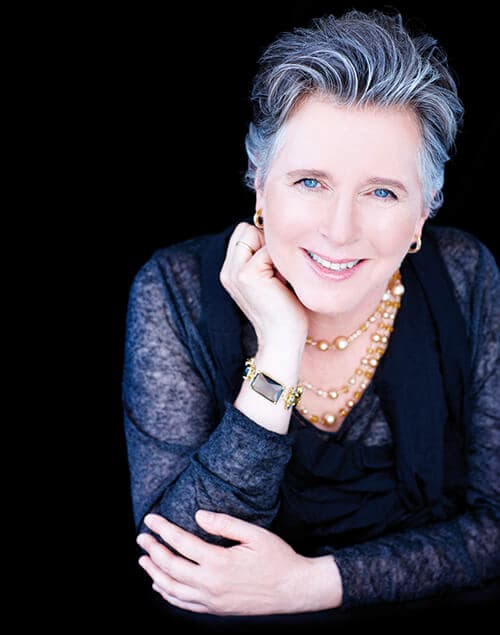
Janina Fialkowska
Hailed by her mentor Arthur Rubinstein as “a born Chopin interpreter”, Polish-Canadian pianist Janina Fialkowska captures the soul of Chopin, in particular in her performances of the Mazurkas, works which reveal Chopin’s patriotism and innermost sentiments towards his homeland. Fialkowska is sensitive to both the humble, peasant origins of the Mazurka and Chopin’s elevation of the genre into concert pieces. She really captures the poetry, poignancy, and whimsical emotions of these Polish folk dances, and her rubato is perfectly judged, especially important in these pieces where suppleness of pace lends greater emphasis to the emotional depth of the music.
Bruno Walter - his life and his music
Bruno Walter was a German-born conductor, pianist and composer. Born in Berlin, he escaped Nazi Germany in 1933, was naturalised as a French citizen in 1938, and settled in the United States in 1939. He worked closely with Gustav Mahler, whose music he helped to establish in the repertory, held major positions with the Leipzig Gewandhaus Orchestra, New York Philharmonic, Concertgebouw Orchestra, Salzburg Festival, Vienna State Opera, Bavarian State Opera, Staatsoper Unter den Linden and Deutsche Oper Berlin, among others, made recordings of historical and artistic significance, and is widely considered to be one of the great conductors of the 20th century.
Bruno Walter the Composer
by Georg Predota, Interlude
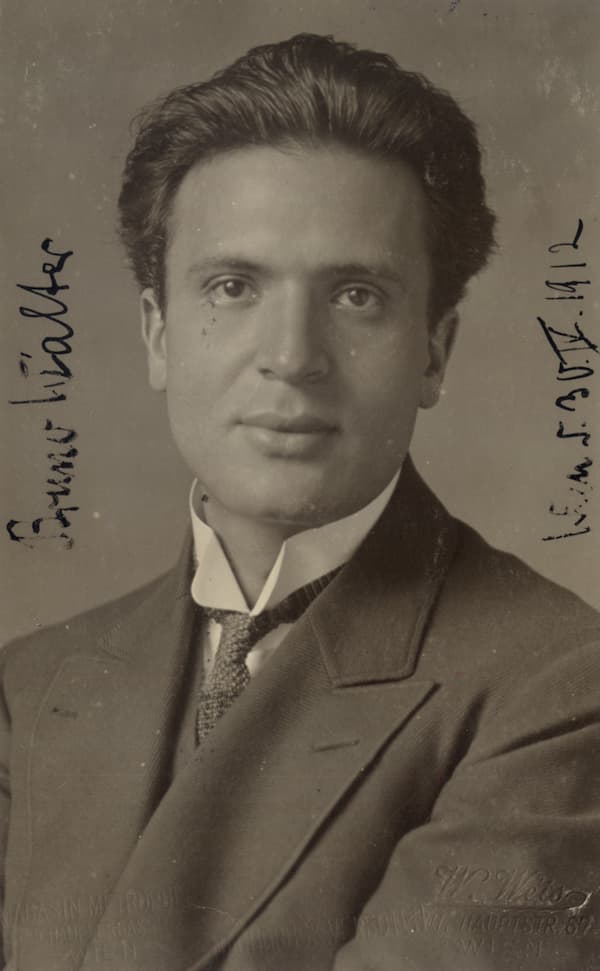
Bruno Walter in 1912
For one, Walter was a founding member of the “Society of Creative Musicians,” founded in 1904 and championed by Alexander von Zemlinsky and Arnold Schoenberg, with Gustav Mahler as the honorary president. The musicologist Guido Adler wrote, “the society aims to give contemporary music an ongoing platform and to keep the concert-going public abreast of current developments in music composition.”
From his earliest days at the Stern Conservatory in Berlin, Walter was interested in composition as he “covered innumerable sheets of music of all kinds… none of them remarkable.” Initially, Walter prepared for a pianistic career but eventually turned towards composing and conducting. His composition activity flourished during his early years in Vienna, and in an article by the Mahler biographer Richard Specht, Walter was counted among the progressive composers of the day.
Arnold Rosé

Arnold Rosé
In 1901, Walter was appointed at the Vienna Court Opera at the request of Gustav Mahler. Walter knew Mahler from Hamburg, and he described him as a man “who renewed himself every minute, and who did not know the meaning of slackening either in his work or in his vital principles.” However, Walter initially built his most intense artistic relationship with the violinist Arnold Rosé, concertmaster at the Vienna Philharmonic and leader of a famed string quartet that bore his name.
As Walter writes in his autobiography, “I shall never forget the sublime beauty of his violin solos, and the magic of Rosé’s playing lost none of its enchanting effect on me in the course of a great many years… Never for a moment did the high tension of his playing relax, whether at rehearsals or performances…His musicianship was innate and intuitive, his intonation and sense of rhythm were infallible, and he was gifted with a perfect ear.”
As such, it is hardly surprising that the Rosé Quartet premiered Walter’s String Quartet in D Major on 17 November 1903. Walter told his friend Hans Pfitzner after the premiere, “Rosé performed my quartet exquisitely. The audience received the first two movements warmly, then listened to the third (most important) movement with icy silence, and the last movement ultimately unleashed a veritable battle; the press was at a total loss but were respectful.” The work was never performed again, and parts of the autograph score were presumed lost. Fortunately, a copy of the entire composition has recently been unearthed in Vienna.
Piano Quintet
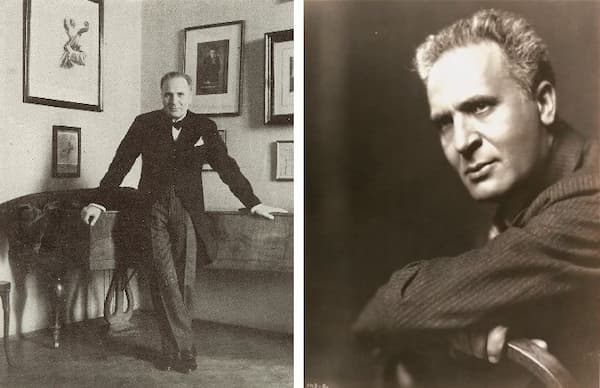
Bruno Walter
The Rosé Quartet with the composer at the piano also performed the premiere of Walter’s Piano Quintet in F-sharp minor on 28 February 1905. This substantial four-movement work is modelled in the tradition established by Schumann and Brahms, and written in a late-Romantic style. As Wolfgang Klos writes, “the work is dedicated to Nina Spiegler (née Hoffmann), who almost became Mahler’s sister-in-law and whose salon brought together the leading intellectuals in Vienna at the turn of the century, including Hugo von Hofmannsthal, Karl Kraus, Alfred Polgar, Peter Altenberg and Arthur Schnitzler.”
Walter composed dense and propulsive outer movements, “tossing out ideas like darts that don’t consistently strike nor stick to the intended target.” Cast in three parts, the second movement marked “Ruhig und heiter” has melodic touches reminiscent of Mendelssohn punctuated by a fiery central section. I hear a bit of Mahler in the third movement, also in three parts, but it seems rather overly busy in parts.
The work was reasonably well received, but it has only recently been recorded. In addition, Universal Edition was an early publisher of Walter’s work, and they have finally issued the first edition as well. Contemporary reviews have been lukewarm at best, describing the Quintet as “a mess with clunky scoring and a dense and opaque texture. Walter chose the right career path.”
Symphony No. 1
Bruno Walter was intimately connected with premiere performances of the symphonies of Gustav Mahler, and he started work on his own Symphony No. 1 in 1906. He played through the work for Mahler in September 1907, but it clearly failed to make an impression. As Mahler wrote to his wife, Alma, “Unfortunately, it means nothing to me, and my frank opinion put him in a state of mild despair.”
The work did premiere on 6 February 1909 at the Vienna Musikvereinssaal with the composer conducting. As Erik Ryding notes, “A large and ambitious work, the symphony runs for nearly an hour, and shows Walter completely in control of his massive forces. For a first symphony, it is a remarkably advanced piece with well-wrought counterpoint and ingenious motivic development both within and across movements. The angular, chromatic lines and the sometimes-tortured atmosphere, specifically in the opening movement, may come as a surprise.”
A critic suggested that “Walter’s music strives to capture chivalric feeling, battle, glory, power, heroic victory and death,” sentiments that do seem to capture much of Walter’s musical expressions. However, Vienna’s most feared critic at the time, Julius Korngold wrote, “Walter’s themes seem artificial, not naturally grown…twisting laboriously, saying little of significance. Even the development, the structuring, indeed the use of material … are lacking in clarity and a deeper inner logic.” Erik Ryding disagrees, and sees the symphony not as an imitation of Mahler, but an original symphony that marks a significant step forward in style.
Lieder
Bruno Walter was a voracious reader who developed a passion for literature during his early years at school. He devoured the poetically inspired fairy tales of Andersen and the collection of Grimm, and he was soon captivated by the fabulous works of Greek mythology. As he recalls in his autobiography, “when I was nine or ten, the attraction to my juvenile books began to fade, and I felt drawn towards the treasures in my parents’ bookcase.”
He was soon reading Goethe, Schiller, Lessing, Heine, Hauff, Rückert and Shakespeare. As he recalled, “my early eagerness for and susceptibility to the drama and my inclination to identify myself with literary figures clearly indicate a dramatic vein in my mental endowment. No wonder then that at the very beginning of my career, I was irresistibly drawn toward the opera.”
Walter soon graduated to a “well-ordered and profound cultivation of beloved authors,” and he found his way into poetry. Besides Goethe, “whose works implanted in me a passionate desire for self-education and the systematic development of my talents,” he became fond of the poetry of Joseph von Eichendorff. Predictably, Walter set a number of poems to music, and the featured Eichendorff selection bears the clear musical influence of Gustav Mahler.
Violin Sonata in A Major
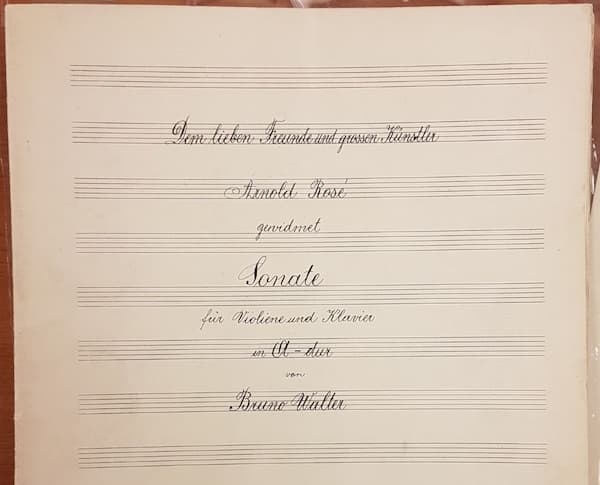
Bruno Walter’s Violin Sonata score
The Sonata for Violin and Piano in A Major, premiered by and dedicated to Arnold Rosé, first sounded on 9 March 1909 with the composer at the piano. The dedication reads, “For my dear friend, the great artist Arnold Rosé.” This would be Walter’s final chamber music composition and the only one published during his lifetime.
The expansive opening movement provides for a rather complicated motivical development, while the “Andante” undergoes a series of mood changes that place serious technical demands on the performers. The “Finale” unfolds in the manner of a Rondo, with the refrain shared between the violin and the piano.
As Erik Ryding noted, “Walter composed in a post-Romantic, expressionist vein, and his well-crafted works are often thick-textured, ecstatic outpourings.” Walter emphatically stated later in life, “I am not a composer… yet there was a time when I still entertained the illusion of being one.”
Gabriel Fauré (1845-1924) An Anniversary Cello Tribute
by Georg Predota, Interlude
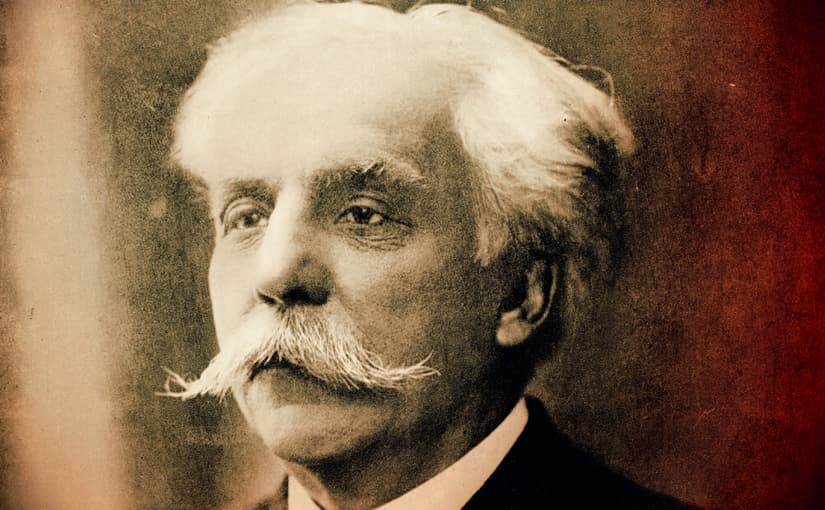
Gabriel Fauré © Pianodao
Stylistic developments none withstanding, Fauré developed his individual voice from his handling of harmony and tonality. Drawing on rapid modulations, he never completely destroyed the sense of tonality, always aware of its limits, yet freeing himself from many of its restrictions.
Fauré’s harmonic richness is complemented by his melodic invention. As Jean-Michel Nectoux writes, “he was a consummate master of the art of unfolding a melody: from a harmonic and rhythmic cell he constructed chains of sequences that convey, despite their constant variety, inventiveness and unexpected turns an impression of inevitability.”
Concurrently with his songs, chamber music constitutes Fauré’s most important contribution to music. The elegance, refinement, and sensibility of his melodic writing easily transferred into the instrumental realm. On the 100th anniversary of his death, let us celebrate Fauré’s highly developed sense of sonorous beauty by exploring his magnificent and highly popular compositions for the cello.
Let’s get started with one of the most beautiful and popular pieces by Gabriel Fauré, the Sicilienne, Op. 78. The work actually has an interesting history, as Camille Saint-Saëns was asked by the manager of the Grand Théâtre to compose incidental music for a production of Molière’s “Le Bourgeois Gentilhomme.” However, Saint-Saëns was rather busy, and he recommended his former student Gabriel Fauré for the task.
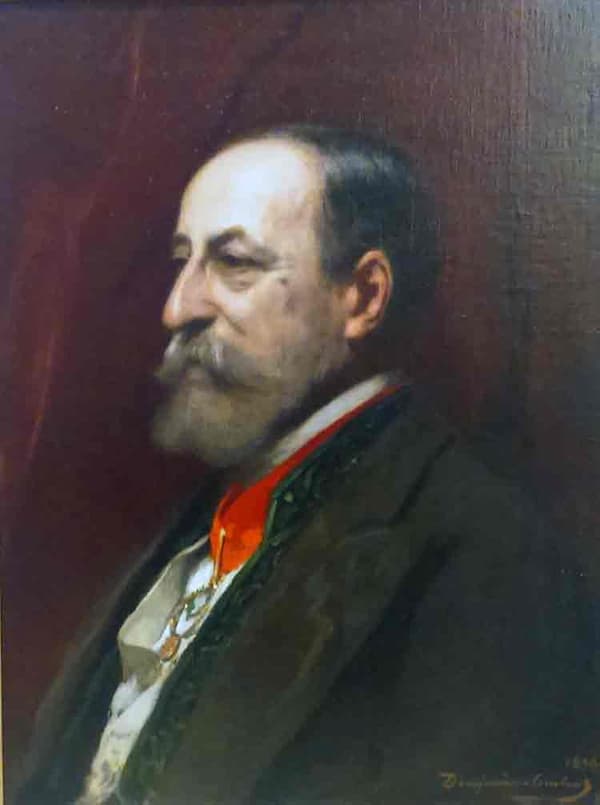
Portrait of Camille Saint-Saëns by Benjamin Constant
Fauré went to work, and the music was nearly complete when the theatre company went bankrupt in 1893. The production was abandoned, and the music, including the first version of the Sicilienne, remained unperformed. Five years later, Fauré was engaged to write incidental music for the first English production of Maurice Maeterlinck’s play, Pelléas et Mélisande. Fauré would eventually publish a suite derived from this incidental music, which included an updated and orchestrated version of the Sicilienne.
Concordantly, however, the Dutch cellist Joseph Hollman, who frequently appeared in concert with Camille Saint-Saëns, was looking for a short encore. As such, Fauré fashioned an arrangement for cello and piano and dedicated the piece to William Henry Squire, a British cellist and principal with several major London orchestras. This most famous and memorable melody builds from a delightful lyrical theme in the minor mode. It evokes a pastoral mood with its lilting rhythms, and it has since been arranged for countless combinations of instruments.
The two sonatas for cello and piano by Gabriel Fauré belong to his final creative period. The first sonata was composed in Saint-Raphaël, where Fauré liked to seclude himself far away from the hustle and bustle of Paris. Written between May and October 1917, the work echoes the unsettling dark days of the First World War. To be sure, Fauré’s younger son Philippe was in the army, and the A-minor sonata seemingly reflects the composer’s anxiety and apprehension.
Fauré’s older son Emmanuel suggested that the uncharacteristically aggressive tone of the composition also represents his father’s anger at his worsening deafness. Like much of his chamber music from this period, Fauré was searching for harmonic and contrapuntal freedom, “and the rarefied and austere character is reinforced by concentrated writing for the instruments.”
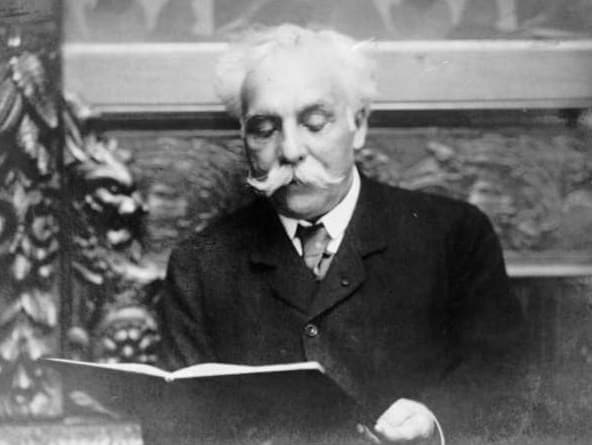
Gabriel Fauré in 1907
The opening “Allegro deciso” launches into a violent theme from a discarded symphony and also from the music of his warlike opera Pénélope. The lyrical contrast is short-lived, and the fiery ending features new unsettling piano figuration. Essentially a restless nocturne, the central “Andante” was the first movement to be composed. The music offers echoes from his Requiem, and the search for tranquillity is continued in the concluding “Allegro comodo.” However, brief glimpses of optimism are subdued by strict contrapuntal severity.
Gabriel Fauré had a complicated relationship with the publisher Julien Hamelle. Hamelle was a shifty character who frequently lost manuscripts, and as he was severely “forgetful,” he was not particularly reliable. Always looking for quick sales, Hamelle loved to add fanciful titles to Fauré’s compositions. Such was certainly the case for the French “Flight of the Bumblebee” he commissioned from Fauré. This virtuoso miniature was composed in 1884 but only published fourteen years later, in 1898.
Hamelle insisted on first calling the piece Libellules (Dragonflies), then Papillon (Butterfly). Fauré was never enamoured with fanciful titles, and he angrily wrote back, “Butterfly or Dung Fly, call it whatever you like.” Fauré did insist, however, that the words “Pièce pour violoncelle,” a title more suited to his aesthetic approach, should appear as a sub-title.
Scored in five sections, it is a piece of pure virtuosity in the outer framing pillars. The middle episodes, however, contain the most beautiful lyrical passages. This gorgeous symmetrical song, as a commentator writes, “finally takes wing over one of Fauré’s favourite descending bass lines.” In the end, Hamelle was correct in appending a fanciful title as Papillon became incredibly popular with cellists from around the world.
Fauré’s Papillon was actually a commissioned pendant for his already highly popular Élégie. That particular gem emerged in 1880 after the composer had finished a violin sonata. Fauré had decided to write a counterpart for the cello, and habitually, he started with the slow movement. When he played it for his friend and mentor Camille Saint- Saëns, his teacher was overjoyed. Work on the sonata progressed no further, but the slow movement with the title “Élégie” was published in 1883.

Gabriel Fauré’s Élégie, Op. 24
For Patrick Castillo, “the compact frame, its brevity, intimate scoring…belies its expressive range. The work seems to honour grief as a multifaceted thing and depicts it as such. Herein lies Fauré’s mastery. He possesses the sensibility to probe, with economy and exquisite subtlety, the depth of human emotion, giving graceful voice to our innermost feelings.”
Scored in three sections, the C-minor opening is reminiscent of a funeral march supported by a solemn progression of chords on the piano. As the middle section modulates to the major key, the music becomes more lyrical and melancholic. A sudden tortured outcry returns us to the opening melody, now transformed and supported by a flurry of notes in the piano.
The Berceuse, later to become part of the Dolly Suite, damaged Fauré’s reputation for a very long time. Let me explain. It actually dates from his student years and was composed in 1864. It was originally titled “La Chanson dans le jardin,” and written for Suzanne Garnier, the daughter of a friend. The initial scoring called for violin and piano, but once it was published, the title page provided the option “for violin or cello.” In the event, this tender little piece caused Fauré to be known as a “salon composer,” a reputation that proved incredibly difficult to shake.
When Fauré first met Emma Bardac, she had recently given birth to a daughter, Hélène, nicknamed Dolly. Emma was married to a banker and Gabriel to Marie, and their affair lasted the better part of four years. Emma was his intellectual equal; she was outgoing, amusing, articulate, and exuded great warmth from the mothering side of her personality. After their affair ended, Emma met Debussy, and after eloping to England, the two got married.
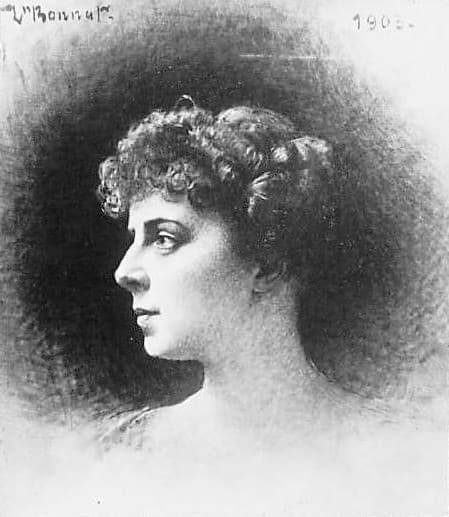
Emma Bardac-Debussy
In the 1890s, Fauré composed or revised small pieces, especially for Dolly. These pieces celebrated a birthday, a pet, or various friends of the little girl. Combining six of these miniatures, Fauré produced the “Dolly Suite” for piano duet. The Berceuse marked Dolly’s first birthday in 1893. This dreamy lullaby rocks the cradle with a swinging accompaniment, a music-box texture, and charming harmonic transparency.
Romance
During his time as organist at the Église de la Madeleine in Paris, Fauré composed a short piece for organ and cello simply titled “Andante.” For unknown reasons, the composer delayed publication until 1894, but eventually adapted the original organ part for the piano. He changed the tempo from “Andante” to “Andante quasi allegretto” and appended the title “Romance.”
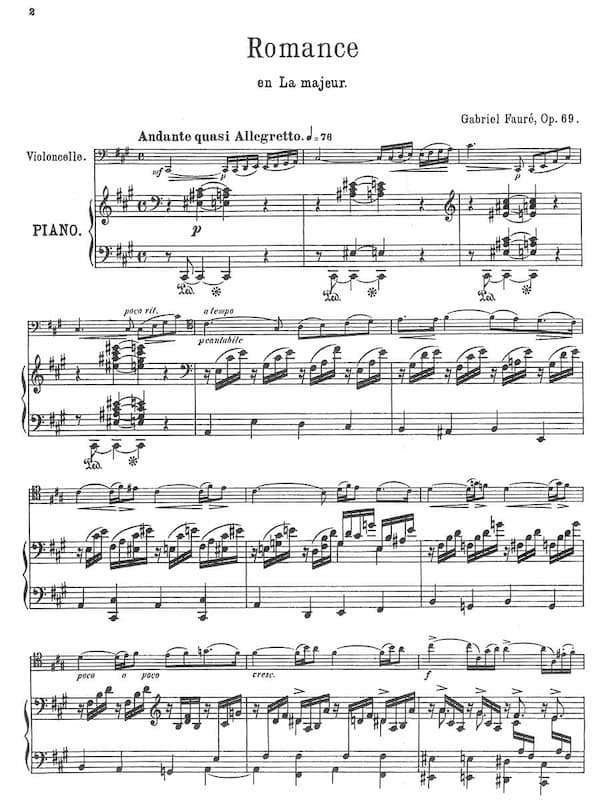
Gabriel Fauré’s Romance, Op. 69
The sustained organ chords became arpeggios, but the solo part remained essentially unchanged. This wonderful miniature places great emphasis on lyricism as the music grows into a long and flexible phrase. The principle theme is not new, as Fauré had already used it in his incidental music for Shylock, an adaptation of Shakespeare’s Merchant of Venice. And you might also recognise it from his song “Soir,” a setting of a poem by Albert Samain.
Sérénade
The last small piece for cello, chronologically, is the “Sérénade” Op. 98. Dedicated to the Catalan cellist Pablo Casals, the piece was a gift to celebrate Casal’s engagement to the Portuguese cellist Guilhermina Suggia. Never mind that the relationship never transformed into marriage. Casals was enthused about the music as he wrote to the composer, “The Serenade! It is delightful every time I play it; it seems new, so beautiful, is it.” For a variety of obvious personal reasons, Casals neither performed the piece in public nor recorded it during his long career.
The “Sérénade” unfolds as an uneasy conversation between the two instruments. The cello line presents a delightful melody akin to the best of Fauré’s songs. However, the piano part is more than just mere accompaniment, interweaving melodic lines and unsettled harmonies. It immediately interrupts the lyrical seductiveness of the melody with arpeggio figuration before taking it over completely. Despite its brevity, the “Sérénade” is surprisingly complex, painfully avoiding rhythmic and harmonic resolutions.
Cello Sonata No. 2
Fauré has almost completely lost his hearing when he started work on his 2nd Cello Sonata, Op. 117. Actually, he was commissioned by the French government to write a funeral march for a military band for a ceremony to be held on 5 May 1921. That particular date marked the 100th anniversary of the death of Napoleon. The sombre theme he composed for the occasion remained in his mind and, as he said, “turned itself into a sonata.”
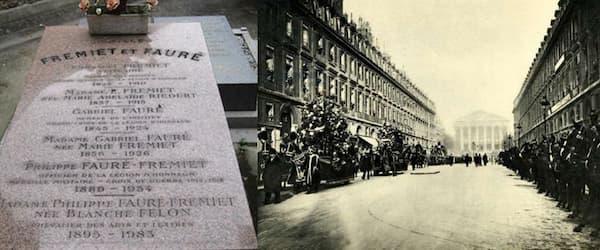
Gabriel Fauré’s grave and funeral
The reworked funeral march takes its place as the central “Andante” in the Sonata, exuding a relaxed tranquillity reminiscent of the mood presented in his Elegy, Op. 24. This sense of nostalgia is prefaced by an essentially lyrical opening movement that features two contrasting themes intertwined in free counterpoint. Jean-Michel Nectoux regarded the joyful finale “as one of the great Fauréan scherzos,” which sounds like an ode to life, “a moving profession of faith from an old man who knows that the end was approaching.”
Vincent d’Indy expressed his admiration for his friend’s work: “I want to tell you that I’m still under the spell of your beautiful Cello Sonata… The Andante is a masterpiece of sensitivity and expression, and I love the finale, so perky and delightful… How lucky you are to stay young like that!” Fauré continued to search for the purpose of music and wrote, “And what music really is, and what exactly I am trying to convey. What feeling? What ideas? How can I explain something that I myself cannot fathom?”
Fauré died from pneumonia on 4 November 1924 in Paris at the age of 79. His last words questioned, “Have my works received justice? Have they not been too much admired or sometimes too severely criticized? What if my music will live? But then, that is of little importance.” Fauré would certainly be delighted to know that his compositions for the cello are still performed with great enthusiasm and regularity. They beautifully reflect Fauré’s final thoughts that “music exists to elevate us above everyday existence.”
Thursday, November 7, 2024
Casablanca 1942 - As Time Goes By (original song Dooley Wilson)
- and indeed, the first screenings brought a solid, but not spectacular success. It was considered to be one of dozens of run-of-the-mill films churned out in Hollywood every year . The film was quickly released to take advantage of the resonance surrounding the Casablanca Conference of the Allies and the landing of troops in North Africa , which took place a few weeks before the film's premiere and was still fresh in the minds of audiences.
LUDWIG VAN BEETHOVEN The man and the artist

